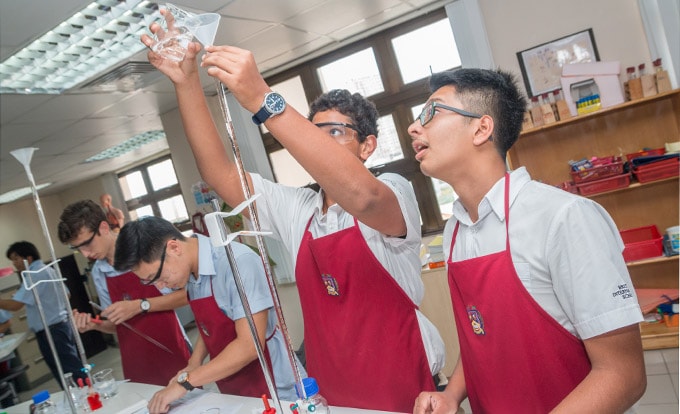Analytical Chemistry competitions have grown in popularity over recent decades and BIS HCMC just staged one for the very first time.

Analytical Chemistry competitions have grown in popularity over recent decades and BIS HCMC just staged one for the very first time.
Analytical Chemistry competitions have grown in popularity over recent decades and BIS HCMC just staged one for the very first time.
“Analytical Chemistry is what analytical chemists do.”
This quote is attributed to C. N. Reilly (1925-1981) on receipt of the 1965 Fisher Award in Analytical Chemistry. Reilly, who was a professor of chemistry at the University of North Carolina at Chapel Hill, was one of the most influential analytical chemists of the last half of the twentieth century.
Analytical Chemistry is the science of obtaining, processing, and communicating information about the composition and structure of matter. In other words, it is the art and science of determining what matter is and how much of it exists.

It has applications in forensic science, bioanalysis, clinical and medicinal analysis, environmental analysis, and materials analysis. Without doubt, analytical techniques are responsible for some of the most impactful technological advancements and discoveries of the past 100 years. This is a growing field with many of the world’s best Universities now developing Analytical Chemistry programmes.
Analytical Chemistry competitions have grown in popularity over recent decades and BIS HCMC has now staged one for the first time. A titration is an analytical technique where a solution of known concentration is used to determine the concentration of an unknown solution. Typically, the titrant (the known solution) is added from a burette to a known quantity of the analyte (the unknown solution) until the reaction is complete. Knowing the volume of titrant added allows the determination of the concentration of the unknown. Often, a coloured indicator is used to signal the end of the reaction, known as the endpoint. The technique requires a great deal of skill and precision. There are many conventions to follow when carrying out a titration but they are easy to learn and can be improved with practice.

15 teams representing all four Houses took part in the first ever BIS HCMC House Analytical Chemistry Competition yesterday which was open to students in Years 10 and 12. Entrants were tasked with determining the concentration of two solutions by reacting them with one solution of known concentration.
Students had to perform using their best titration technique, laboratory skills and some nifty calculations. This was a House event with a difference – problem solving, critical thinking and analysis skills all playing a crucial role. Contestants had to standardise a solution of sodium hydroxide against a known solution of hydrochloric acid and then determine the concentration of an unknown solution of acetic acid using the sodium hydroxide.

Judging was on the basis of the values each team reported for the titres and concentrations of both the sodium hydroxide and the acetic acid solutions. Teams were ranked on how close they got to the actual concentrations. There were also additional marks available for correct titration technique and of course points for participation! Thank you to judges Ms Fountain, Ms Westwood and Mr Essery for your support of the competition and congratulations to all competitors for successfully completing the challenge.
Students and staff will have to wait for the final assembly to find out who the winning House is!
Ms Lucy Jackson, Science Teacher